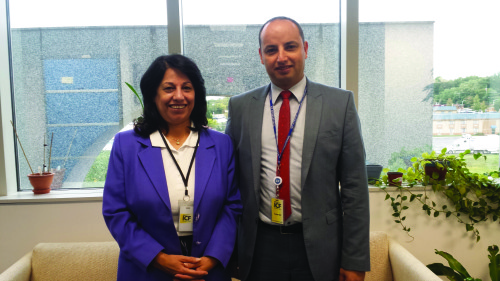Spotlight on Implementing Agencies: Jordan
In October 2013, The DHS Program welcomed visitors from the Jordan Department of Statistics. This is the second in a series of interviews with visitors to DHS headquarters. Find the first post here.
Names:
Ikhlas Aranki (Assistant Director General, Department of Statistics) and Ahmad Abu Haidar (Social Statistics and Poverty Studies Advisor, Department of Statistics).
When not working, favorite place to visit:
Restaurants, shopping centers, and parks.
First time you worked with The DHS Program’s data:
Ikhlas: 1990
Ahmad: 2012
What has been the nicest surprise visiting The DHS Program headquarters?
Meeting old friends.
What do you miss most about home when you are here?
We miss family.
What is your favorite DHS final report cover?
All covers from Jordanian DHS reports.
FavoriteDHS chapter or indicator, and why?
Domestic Violence and Early Childhood development, because these chapters focus on marginalized segments of the population.
How do you hope theDHS data from your country will be used?
- Planning for health programs and evaluating and improving existing programs as well as analyzing trends in demographic parameters.
- Shaping health related policy through providing decision information useful for informed policy choices.



